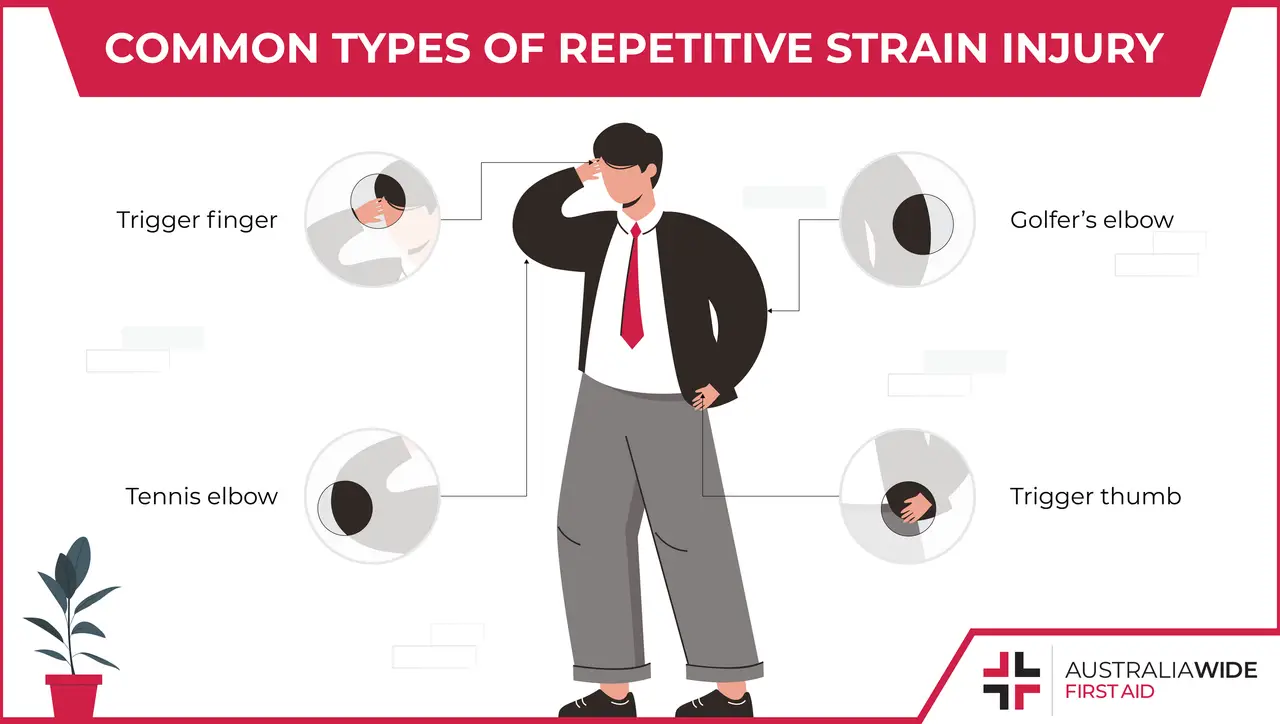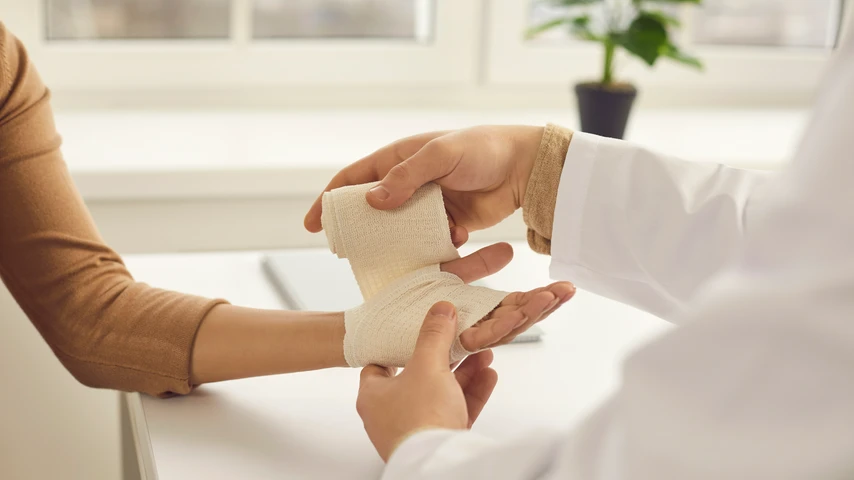Repetitive Strain Injury: Causes, Symptoms, and Treatments


Repetitive strain injury is a broad term that consists of many injuries caused by repetitive motions that put stress on the muscles and soft tissues. Carpal tunnel syndrome is a specific injury of the hands and wrists. It is one of the common types of repetitive strain injuries.
According to the Australian Bureau of Statistics, 563,600 Australian had a work-related injury in 2017. The most common cause was “Lifting, pushing, pulling or bending” with 24.2%. 84% of the injured Australians continued to work in the job where their injury occurred.
Many workers suffer from injuries to backs, shoulders, elbows, wrists and knees. Today, with millennials joining the workforce and working remotely from their computers, the risk of developing repetitive strain injury is growing.
Today, we are going to cover what is repetitive strain injury, the causes of it, its signs and symptoms, the prevention measures to take, home remedies and medical treatments. It is important to understand how this occurs to be able to take actions and protect yourself from injuries at home, work or play.
Repetitive strain injury (RSI) is also known as occupational overuse syndrome (OOS). Repetitive movements and awkward postures put constant strain on the muscles, tendons, ligaments and nerves.
The overworked muscles and tendons cause inflammation and damage to the soft tissues. Repetitive strain injuries is an umbrella term under which many different injuries fall under.
One of the most common types of repetitive strain injury is the carpal tunnel syndrome. Other common localised injuries under RSI include, trigger finger, trigger thumb, tennis elbow, tendonitis and bursitis.
It is not the same as RSI. Carpal tunnel syndrome is one type of injury that falls under the broad umbrella term ‘Repetitive Strain Injury’.
It is caused by stress on the median nerve and the tendons in the carpal tunnel due to repetitive hand movements and awkward postures.
For carpal tunnel syndrome, the stress and strain is specifically on the hands and wrists.
Repetitive strain injuries most commonly affect the:

RSI occurs when performing repetitive tasks with repetitive motion which puts pressure on the muscles and tendons. Overtime, the constant stress and strain damages the soft tissues. Some causes of repetitive strain injuries include:
Early signs of RSI:
Many people ignore the early signs of RSI and continue to apply stress onto their muscles and tendons without taking enough recovery breaks, causing their symptoms to become severe and intolerable.
Common signs and symptoms include:
It is more challenging to prevent RSI from worsening if the cause of it is work-related activities, for instance, repeated movements of lifting boxes or painting a ceiling.
The best way to prevent repetitive strain injury is to avoid overusing or overstressing the muscles and tendons.
Some prevention measures include:

A repetitive strain injury is not permanent and will heal over time. Depending on the severity of the injury, the RSI will heal within a few weeks to six months.
If you think that you have muscle or tendon strain injury, do seek medical advice and obtain a formal diagnosis from a doctor.
Your doctor might also refer you to a physical therapist and an occupational therapist to teach you some repetitive strain injury exercises as well as modify your home and workplace environment to reduce muscle strain and stress.
Learn proper body mechanics and keep yourself safe in the work environment. To learn to identify, prevent and manage the symptoms of repetitive strain injury book a date to learn First Aid with Australia Wide First Aid today!
If you want to learn more about eating and moving your way to wellness, check out the following articles in our Resource Library:

March 6, 2025
Falls are one of the most common causes of injury, particularly among children and older adults. Whether it’s a simple trip or a serious fall from height, knowing how to administer first aid can prevent further injury and, in some cases, save a life.

October 1, 2024
The musculoskeletal system is the foundation of human movement, support, and protection, playing a critical role in our ability to perform everyday tasks. Understanding the components and functions of the musculoskeletal system is essential for preventing injuries and managing conditions that may arise, particularly in workplaces where manual handling tasks are common.

August 28, 2024
A jaw fracture is a break or crack in the jawbone. This type of injury can occur due to various reasons and may result in considerable pain and difficulty in performing everyday activities like eating and speaking.